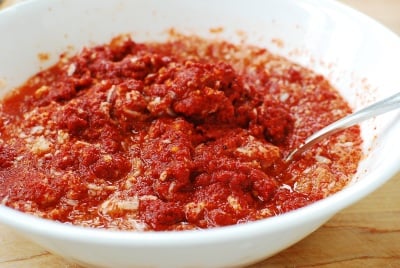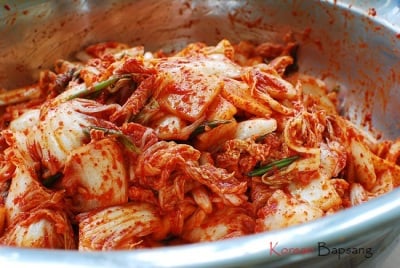Mak Kimchi (Easy Kimchi)
Good authentic homemade kimchi is much easier than you think. Cut up the cabbage, salt, rinse, and mix with the seasoning! That's what this easy kimchi recipe is about.
Ingredients
- 2 medium size napa cabbages (about 4 pounds each) about 8 pounds
- 1-1/4 cups coarse sea salt less if using finer salt
- 6 cups water
- 1 small Korean radish (mu) - about 1.5 pounds Use more cabbage by the same amount if not using radish
- 1 tablespoon coarse sea salt
- 5 - 7 scallions roughly chopped
Seasoning
- 1 cup gochugaru Korean red chili pepper flakes
- ⅓ cup saeujeot salted shrimp, finely minced
- 4 tablespoons myulchiaekjeot fish sauce
- 1/4 cup minced garlic
- 2 teaspoons finely grated ginger
- 1 tablespoon sugar - optional See note 1
Utensils:
- large bowls preferably at least 7 - 8 quarts
- large colanders
- kitchen gloves
- airtight containers or jar(s) - about 1.5 gallons total
Instructions
- Cut the cabbage heads lengthwise into quarters and remove the core from each quarter. Cut each quarter crosswise into bite sizes (about 1.5-inches).
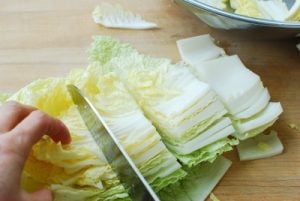
- Place the cabbage pieces in a large bowl(s). In a smaller bowl, dissolve 1-1/4 cups of salt in 6 cups of water. Pour over the cabbage. Toss well to wet the cabbage pieces evenly with the salt water. Let stand until the white parts are bendable, about 2 hours, turning the cabbage pieces over occasionally.
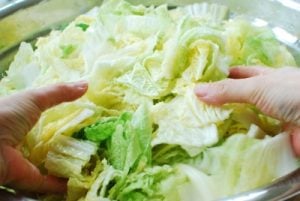
- Cut the radish into bite sizes (about 1.5-inch square, about 1/4-inch thick). Sprinkle with a tablespoon of salt. Toss well. Let it sit for about 30 minutes. Drain. Do not wash.
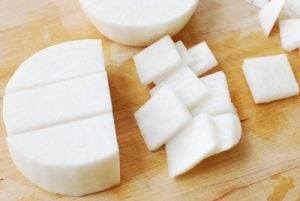
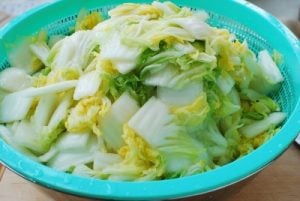
- Rinse the bowl with 1/2 cup of water by swirling around, and pour over the kimchi. Press it down to remove air pockets.
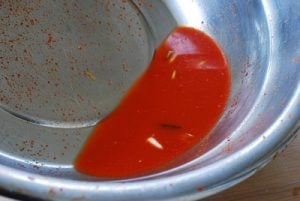
- Leave the kimchi out at room temperature for a day to two depending on how quickly you want your kimchi to ferment. Then, refrigerate.
Notes
1. Instead of sugar, you can add 1/2 of Korean pear or an apple. Peel it and blend with garlic and ginger. Another option is to use maesilcheong (green plum syrup) as a sweetener for kimchi. You can use 3 to 4 tablespoons for this recipe, if available.
2. If you like lighter tasting kimchi, simply reduce the amounts of red chili pepper flakes, salted shrimp, fish sauce, and/or garlic. If you don't have salted shrimp, just add more fish sauce or salt to achieve the desired salt level.
3. You can eat this kimchi any time, but it will taste better after fermenting a week or two in the fridge.

